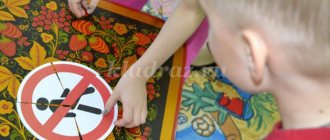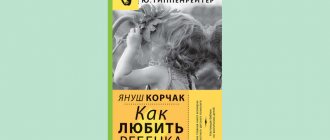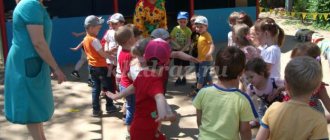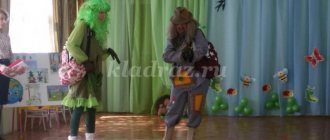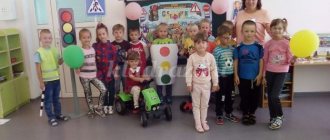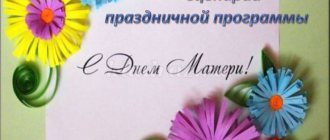If you love the Fort Boyard program and cool games as much as we do, this article is for you. We'll tell you how to give your children a real adventure in the spirit of their favorite show at no cost using the props at hand! This is a Fort Boyard quest scenario with team games, active entertainment and simple preparation. You will succeed following our detailed instructions.
We recommend conducting this quest for children from 6 to 12 years old - they are no longer kids, they know how to play together, and are not yet too old for activities. The Fort Boyard themed quest is a ready-made birthday party and great fun if you just need to keep the kids and their friends occupied. Team - from two to eight participants (after all, we have a home version of the game, and not for school or camp, but you can easily adapt our ideas to a larger number of players). The advantage of the game is that it is a team game - children do not compete with each other, but defeat a common opponent - in our quest it will be “Elder Fura”. Any adult who is ready to explain the rules of games to children and monitor their progress is suitable for his role. It would be great if you could find a cloak, a chain with a key, and any suitable makeup for the “old man.” Other adults usually join in the game with excitement, help the children or, conversely, create obstacles, help run the games - it’s very fun and family-like.
A little information : Fort Boyard (sometimes translated as Fort Bayard) is an abandoned defensive fortress on an island in France, which has its own gold fund (guarded by tigers). The task of the team of players is to complete various physical and intellectual tasks, get a certain number of keys and all together enter the treasury of the fort in order to collect as much gold as possible there in a limited time.
Quest Fort Boyard at home
1. The main thing that the team will be hunting for: the final prize , a gift, sweets, “gold” (chocolate gold coins or regular coins spray-painted in a box painted to look like a chest). In addition to sweets, we put in various stones and coins, like a real “treasure”.
2. Props for 8 games:
- Board, small nails and hammer;
- Pizza box, string, plasticine and a small ball;
- Two plastic cups and any pebbles or coins, a basin of water;
- A mop or any stick, thread, any magnet, tape;
- Checkers, paper and felt-tip pen;
- Clothesline or any similar line;
- Sushi chopsticks and a small ball;
- Unnecessary old keys (or draw them on paper).
We talk about the Fort Boyard quest at home, in an apartment, but if you are outside, you have even more room for children’s imagination and activity: increase the distances, include more running in the tasks.
Option to play with two teams: if children are over 9 years old, you can arrange a competition and divide them into 2 teams (no less than 3 and no more than 8 participants in each): give them insignia - colored bandanas or headbands. Then it is more convenient to have 2 presenters and teams to pass different tests in parallel.
We have a unique opportunity to celebrate our son’s birthday in the gym of the school where my brother works. Therefore, I developed the script taking into account a large territory. Of course, there was a temptation to just throw a ball to the children and let them go crazy, but I wanted something more interesting and this is what came out of it...
There were 14 people invited (including the birthday boy).
First, we divided into two teams: from opaque bags, the children pulled out ribbons of two colors, which were then tied in the form of ties. The names of the teams were written on the ties: “Lightning” and “Victory”. And then, to the sounds of the melody from the television game “Fort Boyard,” two teams run into the hall.
The chief keeper of the Fort gives a welcoming speech and issues maps of the Fort. And then the tests begin. First test. "Match relay"
Using matches, two teams race to spell out the word “key.” Those who complete the task first receive the key.
Second test. "Pyramid".
Team players take turns building a pyramid of cubes.
The team whose player drops the pyramid loses, and the winners receive the key. Third test.
"Accurate shooter". Children must burst the balloons with darts; a key is hidden in one of the balloons.
Fourth test. "Climbers."
Children take turns climbing onto the wall bars and untying the strings on which is attached a thick rope with a key at the end. The latter climbs onto the rope and removes the key.
Fifth test. "Mysterious Banks"
The key was hidden in one of the opaque jars.
The jars were filled with various items: pine cones, pieces of paper, cereals, water, flour, etc. The children had to find the key by touch. Sixth test.
"A dark room". In a dark room, there were many balloons on the floor with notes attached to them. One of them says where the key is. One child shines a flashlight, and the second looks for a note.
Seventh test. "Smart sticks"
There are 30 sticks on the table.
Team members take turns coming to the table and taking 1, 2 or 3 sticks. We must not take the last stick. The winners receive a key. Eighth test.
"Bowling". Team members knock down pins with small balls. When all the pins are knocked down, a key is found on one of them.
Ninth test. "Long rope"
A long rope is stretched across the hall (at a height of approximately 2 m). There are paper cylinders on one edge of it. Children, using a long stick, must move the cylinders to the opposite side, overcoming obstacles along the way (stepping over barriers). A key is attached to the last cylinder.
After all the tests were overcome, the keys were changed to hints. Team members had to guess their word (words: “Friendship”, “Smile”). The team that guessed the word faster went to the treasury first.
Treasury.
There are several letters on the floor. On each letter there are dumbbells, strings are tied to them, which stretch to the prize. Children each stand on their letter and untie the strings. The prize falls safely, the children sort out the treasures (kinders, chocolates, and candles for the birthday cake).
Well, then everyone goes to tea.
And only then there was “Dodgeball”, and football, and we just had a blast. In general, everyone was happy!
7 x photos and text: Alla Kovaleva, especially for the children's portal "Sun" Published on January 13, 2009.
Quantity Leave your comment
How to conduct a quest
When the children are assembled, give them team paraphernalia (badges, headbands, bandanas of the same color), and let them come up with a team name and motto. Tell us the essence of the quest: pass all the tests and collect the maximum number of keys. And in the finale, exchange them for clues to the last riddle and get the fort’s gold! Immersion in the atmosphere will depend on the artistry of the presenter, don’t be shy, this is a game!
Warn that if there are 5-8 participants, then it will not be possible to play each test in a bunch at the same time: take turns, or for each test the host will choose who will play with him. If there are 2-4 players, then all the tests can be completed by all participants at the same time.
Hide the final prize for children in a secluded place in advance (so as not to be discovered by accident): it could be a cake, sweets, coins, small toys, etc.
1 challenge, Nails
The host and two players take turns hitting the nail, gradually hammering it into the board. Whoever made the last hit wins, if it is a player, gets the key. If the leader is the player, they do not receive the key. When there are more players, we repeat the tournament in threes.
The number of keys for this round is determined by the presenter.
2 test, Labyrinth
From a pizza box or any suitable piece of cardboard you need to make a labyrinth, with corridor walls made of plasticine. Attach strings to the four corners of the box. Strengthen the bottom so that it does not fold (if necessary).
Task for players: 2-4 participants take the ropes in their hands and raise/lower the edges of the maze so that the small ball rolls from the starting point to the finish without flying out of the maze. You need to work as a team and not make sudden movements.
The passage can be repeated so that everyone can participate. At the discretion of the presenter, he can issue a key only if the ball successfully passes through all passes.
Challenge 3, Sink the ship
Prepare a deep container or bowl of water. Immerse two cardboard or plastic cups in it, pre-weighting them with coins/pebbles so that they float at the same height. Place another pile of stones/coins nearby.
The test will be passed by the one whose ship stays afloat longer - the leader or the players. We take turns putting a pebble into the opponent’s glass (you cannot throw or help with your hands).
You can try another version of the game: now the players put pebbles in their glass, and the leader puts them in his. Caution will increase! Players may not receive a key in some tests - let everything be fair, this will add drive and interest. Before the final puzzle, they will have an attempt to catch up.
4 test, One, two, three
Prepare a fairly large pile of pencils. The leader and two or three players play. In turn, everyone can take 1, 2 or 3 pencils on their turn. Whoever takes the last pencil loses. A logic game, you can play it several times with different numbers of pencils.
Challenge 5, Fishing
Make a magnetic “fishing rod” from available materials: tie a strong thread to a mop stick, and attach any non-flimsy magnet to it with tape.
Place the keys on the floor at different distances from the starting line (if there are none, then coins will do). The players' task is to catch as many keys as quickly as possible, one at a time (or with two fishing rods in parallel, if you have two ready). These keys can then go into the general classification of keys, or issue one “credit” for all of them.
If space allows, let you run to the fishing spot and bring each key you catch to one place. The children will be happy and tired, which is also great.
6th test, Checkers
Draw a sequence of 10 black and white circles on a piece of paper in advance (or several different blanks so that the presenter does not remember and is on an equal footing with the players).
The leader and 2 players play (or more, but then you will need more checkers). For 20 seconds, everyone carefully looks at the sequence (let everyone sit on one side of it), then the presenter closes it and everyone tries to repeat the sequence exactly without making mistakes. This is not at all easy, as experience has proven! If the presenter made a mistake before everyone else or at least one player, then he lost. But if all the players were wrong, they didn’t win either.
You can repeat this: in each test, look at the mood of the players, all competitions and games should be fun and with excitement!
7 test, Blind and guides
For the test you will need a rope 2-3 meters long. Its thickness should be noticeable to the foot; you need to play barefoot or in socks.
One player is blindfolded, the leader lays out a “path” from the rope along any trajectory. Participants-guides, with their instructions, guide the “blind” person so that he walks exactly along the rope. We repeat the test several times, each time changing the “blind” and the path trajectory.
8 test, Don't drop the ball
Two participants play, each holding sushi sticks (or any small even sticks). There are two versions of the game, they depend on the age of the players - the older, the more difficult.
It’s simpler: you need to stand facing each other and walk a certain distance, holding a small ball together with chopsticks. More complicated: add “islands” from A4 paper. You also need to move some distance, but only across the islands. At the same time, while one stands on the island and holds the ball, the second moves his sheet, stands on it, receives and holds the ball, while the second moves his sheet too. The most difficult thing is to evenly pass the ball onto the sticks and hold it after that.
The Sixth Birthday, or Adventures in Fort Boyard
Every year, for his birthday, we come up with something special for our son; fortunately, he was born on August 5, and there are enough scenarios for a children’s party in the fresh air. For example, last year we were looking for pirate treasure. All year my son enthusiastically watched Fort Boyard, and we decided to build something similar at the dacha.
So, the team consisted of five people - four boys 5-7 years old and one 6-year-old girl. First they had to get 5 keys.
The first clue is the riddle of the old man Fur (the old man was the grandfather, who was wearing a black beard), it was quickly guessed.
The second key - in the room you had to find, with your eyes closed, 5 pieces of dishes that were lying there mixed with toys. There was a key in the glass.
The third key was tied to the bench with tape. To get it, it was necessary to untangle the toys tied to the tape, a tennis racket and a tricycle. This turned out to be one of the most difficult tasks.
The fourth key is that they set up a “snake” on the road in front of the house, placing plastic cups of water. I had to ride my bike around all the cups without spilling them.
The fifth key is tasks for mental counting within ten. In the allotted time (they had to get an hourglass from the attic), the guys did not have time to guess everything, and one of them was captured in the attic by Elder Fura. But, having guessed another riddle, the prisoner was safely freed.
Now it's time for the hints.
The first mystery is that a wooden block was driven into the ground. It had to be swung from side to side, and at the bottom there was a hint - “red in color.”
The second riddle hung on a tree (the tree is beautiful, spreading, and you can easily climb it), however, there was barely enough time. The second clue is “with fluffy fur.”
The third tip was to hit the bucket with the ball five times within the allotted time. We've got it, and there's still half the time left! The third clue is “with a tail.”
The fourth hint is to inflate 6 balloons, according to the number of guests + one hint. Everyone had to pop a balloon and complete a task - jump on one leg to a tree and back, somersault over your head, name 5 edible things starting with the letter “v”, draw a man with his eyes closed, depict an animal without words, the fourth clue was “in a wheel” .
the fifth clue to the kids just like that, but then the mischievous time keeper (dad, dressed in a cap and a raincoat) intervened, who snatched the clue and ran to the lake. The lake has a shallow beach and the weather was beautiful, so we didn't hesitate to throw the tip bottle into the lake near the shore. While the children were undressing, one boy jumped into the lake in his festive clothes. He had to change his clothes, but he got the clue - “he sings songs and gnaws all the nuts.”
There was no doubt - it was a squirrel. Now the children had to fight with the time keeper for time.
The first competition is to build a tower. Whoever lands on the die loses.
The second competition is hammering a nail. The birthday boy confidently hammered the nail right up to the head.
The third competition is to lay out a sequence of colored balls from a mosaic, as in the example. First, you are given a minute to remember the pattern, and then the pattern is closed, and you need to repeat the pattern. The children won confidently.
Fourth competition - an ordinary plastic lid was floating in a bowl. Coins were placed in it; whoever puts in the last coin and the lid sinks loses.
Fifth competition - we picked different berries from the garden, cut cucumbers and turnips. The girl was blindfolded, and she had to taste what was put in her mouth. The task was completed flawlessly!
The most crucial moment came - the children had to distribute the letters (they were written on cards) and find their cards.
After that, they were launched onto the lawn, at the end of which there were prizes - small cars, simple games, dolls, beautiful hairpins, felt-tip pens, etc. The condition was the following: you could take only one gift at a time. During the allotted time, each one collected 4-5 gifts, and then a tiger, a good-natured cocker spaniel, jumped out onto the lawn. The children were delighted.
As a treat, we offered them small canapé sandwiches, stuffed eggs, fruit, “mushrooms” made from cucumber legs and tomato caps with mayonnaise stains and, of course, a cake, the recipe for which I found on 7ya.ru. It was called "cheerful little bear."
The holiday ended with fireworks, and then everyone went swimming. When the guests left, everyone vying with each other asked when the next birthday would be. We'll have to come up with something else next year!



